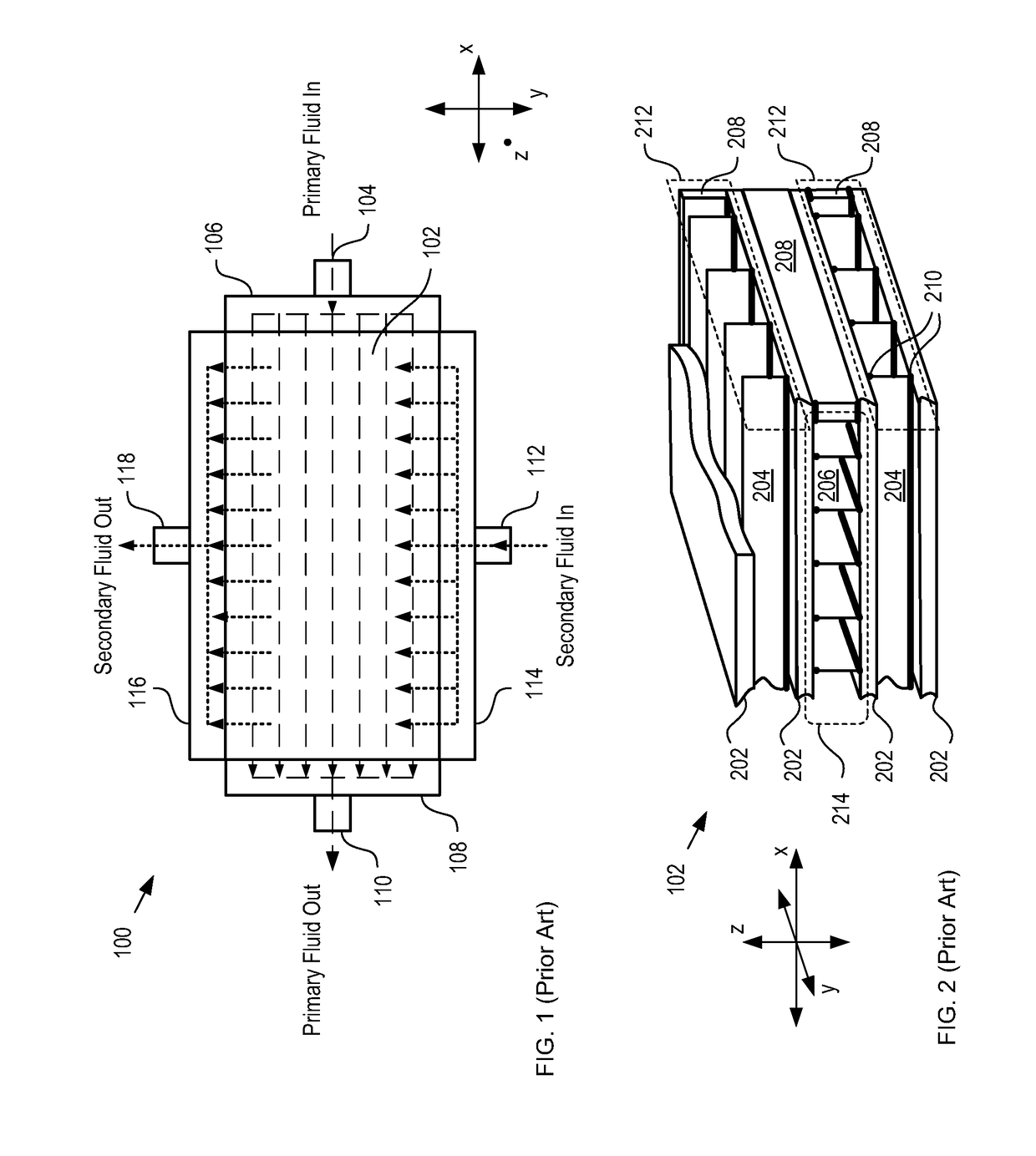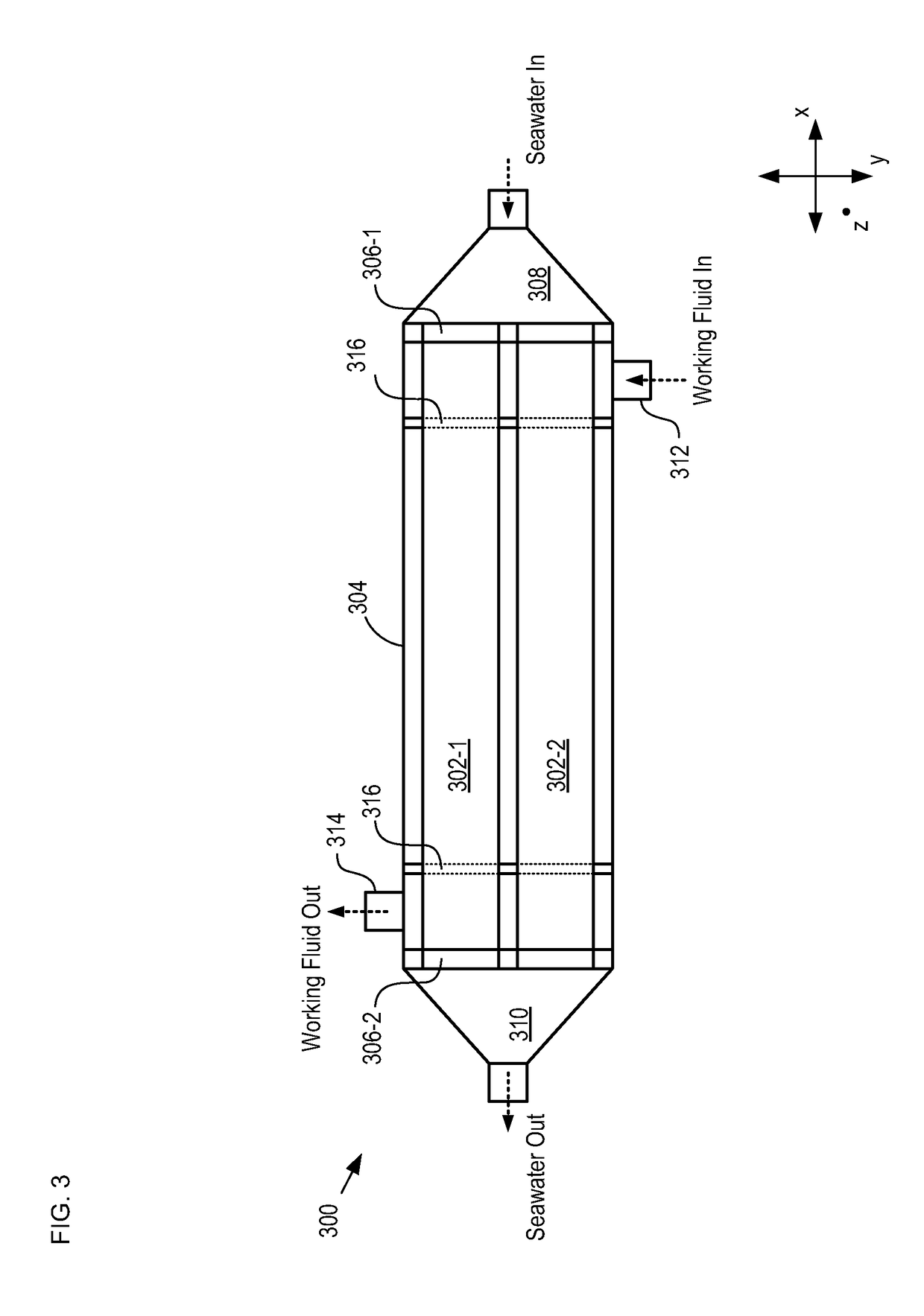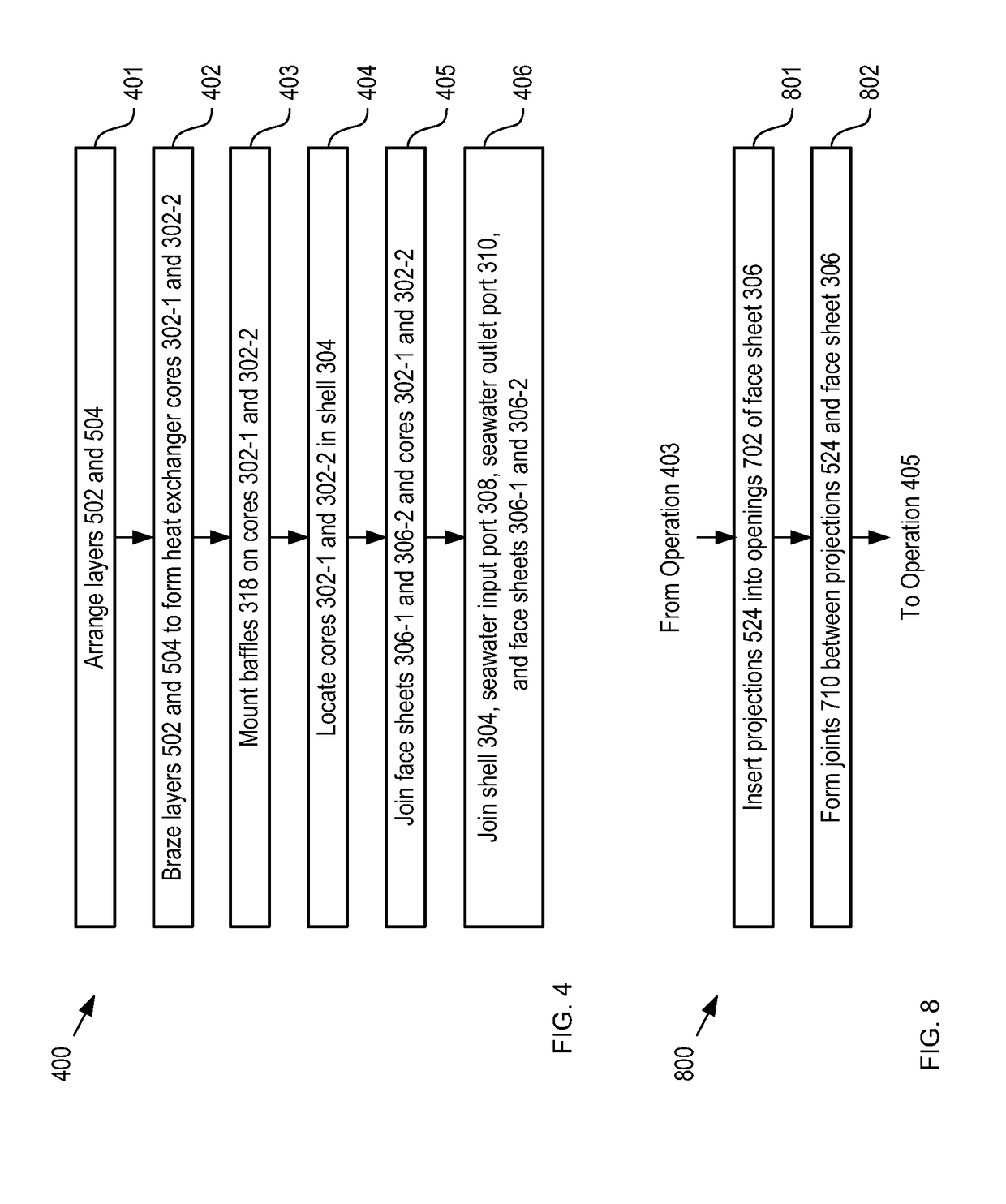Heat exchanger and method for making
a technology of heat exchangers and heat exchangers, which is applied in the field of heat exchangers, can solve the problems of high capital cost of these systems, thwarting commercialization, and contributing to the capital cost of otec plants, and achieves the effects of reducing the risk of otec plant failur
- Summary
- Abstract
- Description
- Claims
- Application Information
AI Technical Summary
Benefits of technology
Problems solved by technology
Method used
Image
Examples
Embodiment Construction
[0035]FIG. 1 depicts a schematic diagram of plate-fin heat exchanger in accordance with the prior art. Heat exchanger 100 comprises core 102, primary fluid inlet 104, manifolds 106, 108, 114, and 116, primary fluid outlet 110, secondary fluid inlet 112, and secondary fluid outlet 118.
[0036]In operation, heat exchanger 100 receives primary fluid at primary fluid inlet 104, which is fluidically coupled with manifold 106. Manifold 106 distributes the primary fluid to a plurality of flow channels, aligned with the x-direction, which are defined in core 102. After passing through core 102, the primary fluid is collected at manifold 108 and provided to primary fluid outlet 110.
[0037]In similar fashion, heat exchanger 100 receives secondary fluid at secondary fluid inlet 112, which is fluidically coupled with manifold 112. Manifold 112 distributes the secondary fluid to a plurality of flow channels, aligned with the y-direction, which are defined in core 102. After passing though core 102,...
PUM
| Property | Measurement | Unit |
|---|---|---|
| melting temperature | aaaaa | aaaaa |
| galvanic-corrosion- | aaaaa | aaaaa |
| length | aaaaa | aaaaa |
Abstract
Description
Claims
Application Information
 Login to View More
Login to View More - R&D
- Intellectual Property
- Life Sciences
- Materials
- Tech Scout
- Unparalleled Data Quality
- Higher Quality Content
- 60% Fewer Hallucinations
Browse by: Latest US Patents, China's latest patents, Technical Efficacy Thesaurus, Application Domain, Technology Topic, Popular Technical Reports.
© 2025 PatSnap. All rights reserved.Legal|Privacy policy|Modern Slavery Act Transparency Statement|Sitemap|About US| Contact US: help@patsnap.com



